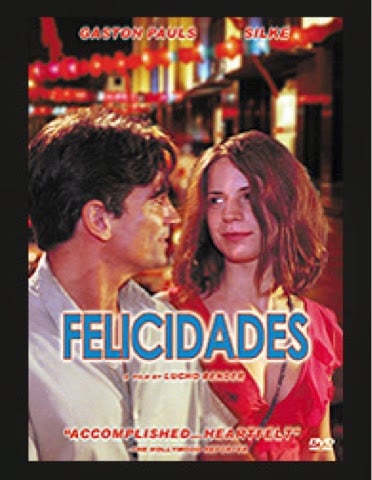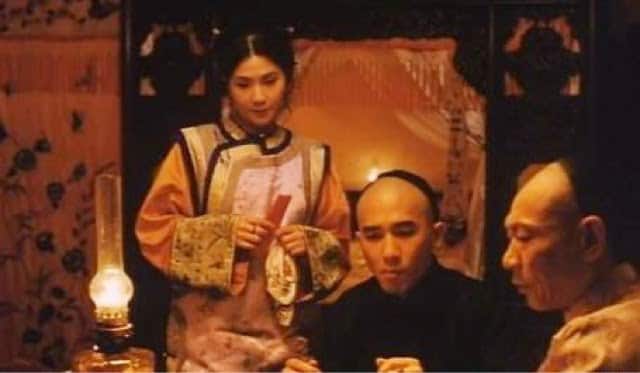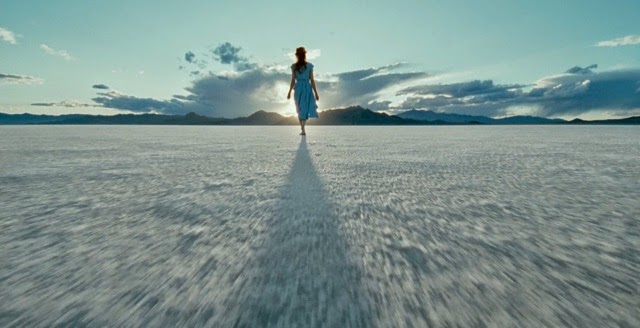
Felicidades (Lucho Bender, 2000)
March 26, 2010
In the Mood for Love (Wong Kar-wai, 2000)
September 28, 2010About Flowers of Shanghaï, critic Kent Jones wrote, “It’s tempting to say that there’s no real nuance to speak of in Hou, just a richly composed set of surface details”. Tempting, yes, but such a stand would throw us far from the truth. Hou Hsiao Hsien (HHH)’s depiction of life in the late 19th century explores the inherent contradictions in the era’s Chinese society. The most evident example of that contradiction is HHH’s use of the contrast between the beauty and elegance of his mise-en-scène and art direction with the amoral — granted within a contemporary context — and exploitative nature of Old Shanghaï. HHH and his frequent collaborator, Chu Tien-wen — writing the screenplay — by opposing throughout the movie different characters to the phallocentric, unspoken social decrees of Old Shanghaï, convey a sense of injustice that speaks directly to the film’s discourse. From those oppositions, three in particular stand out: in Crimson, Jade and Emerald, we can see three different perspectives on the effects of the male-dominated Shanghaï on its women.
The first time we see Crimson, she’s reprimanding Master Wang, her provider, for having called on another flower girl. Aside from the obvious jealousy that this first confrontation entails, it’s as if Crimson is trapped, unable to break away from her high spending, dependent lifestyle and thus forced to agglutinate herself to a gentleman caller (not forcibly Master Wang as, in the powerful last shot of the movie, when we see her sitting in silence with yet another caller. Having been discarded by Wang, she has to latch herself onto some other in a less symbiotic and more parasitic kind of relationship). In this patriarchal society, where she can only be the object of affection and can never be allowed to develop as a subject, an individual, she has no power, no control. Her only way to gain an identity is through one of her gentlemen callers. After Wang catches her with another caller while he’s at her house, she lies, trying to win back his favour, knowing the hard truth that without his willingness to provide for her, she will simply cease to be.
Jade, the youngest of the three flower girls, is in a constant state of flux, in search of her identity. She believes having found it through Shuren, their connection evident since the first time they meet at one of Pearl’s banquets. When she hears that her lover is to be married, she feeds him poison, believing that he will honour their engagement to one another and die with her. But, when he refuses, she exhibits a totally improper and hysterical response by trying to hit Shuren and yelling at him. Unlike Crimson, who calmly reasons with Wang reminding him his responsibilities, Jade’s response is a passionate one, a dissonant voice in a restraint world. She becomes almost schizophrenic, unable to conform, yet also unable to willfully reject this world. Split between choices. And so, her future will be decided for her.
Emerald is the most modern of the three. She appears as the mirror image of Crimson, similar in their lifestyles but opposites in the way they apprehend their world. Luo, one of her callers, will offer to pay for the freedom that she holds dear, but she will reject him. For her, her freedom, like her identity, cannot come from anyone else but herself. In the boldest, most critical part of the film, she will buy her freedom from her auntie on her own.
At first glance, it is easy not to discern any nuances in the film. But by building an opposition between those three women, HHH and Chu effectively pass judgment on Old Shanghaï as an oppressive Babylonian decadent society. The point of view that reflects the filmmakers toward Shanghaï is that of Emerald for her “Auntie”. An old and obsolete part of a system whose time is soon up.
- Black Panther: A Perspective - March 20, 2018
- Seven Pounds (Gabriele Muccino, 2008) - May 5, 2015
- Honeymoon (Leigh Janiak, 2014) - January 30, 2015



